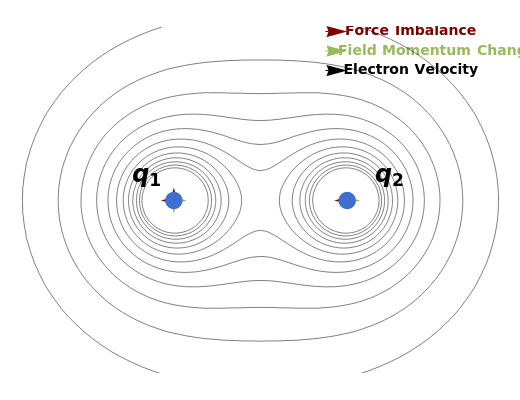Feynman's Relativistic Electrodynamics Paradox
Feynman's Relativistic Electrodynamics Paradox
A charged particle is located on the axis with its velocity pointing along the axis. Another charged particle is also located on the axis, but with its velocity pointing along the negative axis. The net relativistic electric force on both particles is given by , where is the Coulomb constant, is the factor , is the charge, and is the position of the particle. The relativistic magnetic force of particle 2 on 1 is =k. The magnetic force of particle 1 on 2 is zero. The momentum of the electromagnetic field is given by the time derivative of the vector potential in the Coulomb gauge, . The sum of all three terms is zero and shows momentum conservation. The contour lines show the relativistic Liénard–Wiechert potential for each charge.
x
x
x
y
Δ=()+()=-
F
E
q
2
E
x
2
q
1
E
x
1
1
2
γ
1
γ
2
k
q
1
q
2
2
(-)
x
2
x
1
x
k
γ
i
1
1-
2
ν
1
2
c
q
i
χ
i
th
i
F
B
ν
1
ν
2
q
2
q
1
γ
2
2
c
2
(-)
x
2
x
1
y
A
C
q=q=(-)+(-1)+(-)
d
A
C
dt
∂(t)
A
C
∂t
|
t=0
k
q
1
q
2
2
ν
1
2
2
c
x
2
x
1
k
q
2
q
1
2
(-)
x
2
x
1
γ
2
x
-k
q
2
q
1
ν
2
ν
1
γ
2
2
2
c
x
2
x
1
y
